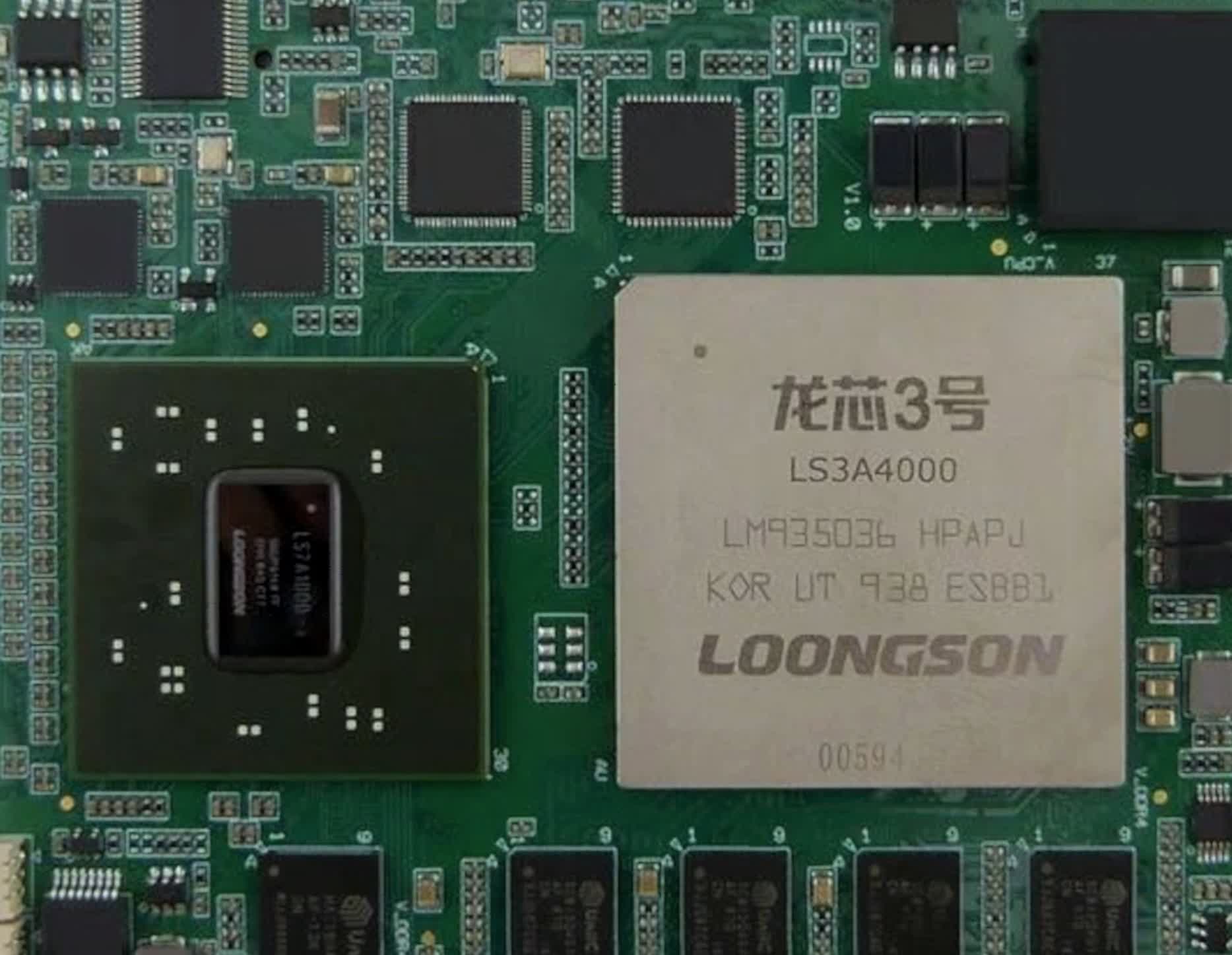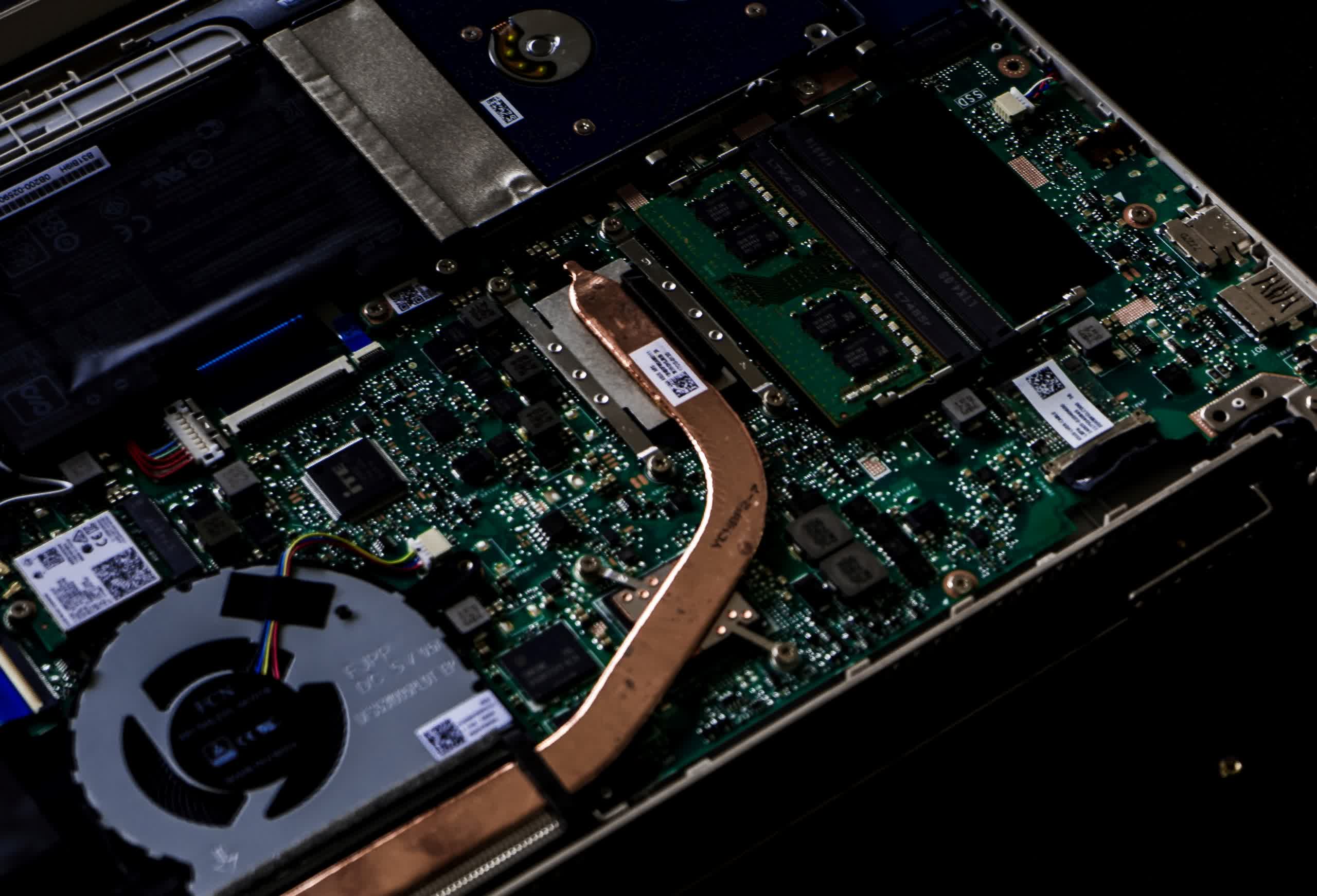Something to look forward to: The new Loongson 3A5000 is a quad-core processor clocked at around 2.3 - 2.5 GHz. It uses Loongson's 64-bit GS464V microarchitecture, which features four ALUs (arithmetic logic units) and two 256-bit vector units per core, which is mostly marketing fluff without the necessary context. Loongson is marketing it for laptops, industrial environments, and even some server applications.
Chinese chipmaker Loongson announced a new processor on Friday. In terms of features, the Loongson 3A5000 comes equipped with two DDR4-3200 memory controllers and a dedicated encryption module. It also has four HyperTransport 3.0 SMP controllers that allow multiple 3A5000s to operate in unison inside a single system, like Intel's Xeons and AMD's Epycs.
But what makes the 3A5000 special isn't specs: it's the novel ISA (instruction set architecture) it uses, called LoongArch. It's broadly similar to x86 and Arm, according to Loongson, but was built from the ground-up to avoid using foreign licenses.
LoongArch has almost 2,000 proprietary instructions and extensions for binary conversion, vector and advanced vector processing, and virtualization. Loongson is marketing it as MIPS64 compatible, and it can run the code written for Loongson's previous MIPS64 processors, but LoongArch is theoretically quite distinct.

Loongson says that LoongArch is 10-20% more efficient than their previous ISA, and contributes to the 3A5000 being 50% faster than its predecessor, the 3A4000 (pictured above), while consuming 30% less power.
It's difficult to compare the 3A5000 to US-designed processors on paper because of their architectural differences. Still, Loongson has said that the 3A5000 scores over 80 points in the SPEC CPU2006 test, which places it in the same performance category as early Ryzen CPUs and Intel's 6th-gen Core CPUs.
If that's not enough performance to impress you, wait for the 3C5000, a 16-core version of the 3A5000 due later this year. China's semiconductor industry is approaching self-sufficiency very quickly, even if they're still a ways off.
Image credit: Artiom Vallat
